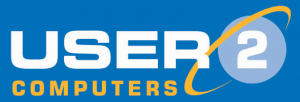Toshiba Europe has successfully sent quantum-encrypted messages across a record 254km of standard commercial fibre optic cable, marking a major step towards achieving real-world quantum-secure communications without relying on highly specialised hardware.
A Record-Breaking Achievement Using Everyday Infrastructure
Quantum cryptography has long promised unbreakable security, but practical challenges have kept it largely confined to laboratories. Quantum key distribution (QKD), a method that uses the principles of quantum mechanics to securely share encryption keys between two parties, ensures that any attempt to intercept the key is instantly detectable. Now, researchers at Toshiba Europe have pushed the boundaries by sending QKD messages across an existing fibre optic network spanning Frankfurt, Kirchfeld and Kehl in Germany.
Using Standard Commercial Equipment, Not Specialist Kit
Importantly, they achieved this milestone without the specialised cryogenic cooling or custom-engineered cables typically required. This makes it the first time coherent quantum communication has been performed at this scale using infrastructure similar to what supports today’s internet traffic.
“This work opens the door to practical quantum networks without needing exotic hardware,” said Mirko Pittaluga, one of the lead authors of the study (published this week in Nature).
The experiment managed a secure transmission rate of around 110 bits per second. While modest compared to classical speeds, it represents an essential proof-of-concept for scaling up quantum communications without prohibitive costs.
What Makes This Different From Previous Efforts?
Quantum key distribution has been demonstrated before. For example, China famously linked Beijing and Shanghai via quantum connections, and even launched a quantum satellite, Micius. However, those efforts typically relied on expensive dedicated infrastructure or free-space optical links requiring near-perfect environmental conditions.
However, Toshiba’s work stands out because it used standard telecom-grade fibre optic cables and commercially viable equipment. There was no need for the ultra-low temperatures usually associated with photon detectors in quantum systems.
How?
The team was able to achieve this by using a technology called twin-field QKD, which cleverly sidesteps many of the transmission losses that usually plague long-distance quantum communication.
Robert Woodward, who leads the fibre QKD research team at Toshiba Europe, described the approach as “using commercially viable components to achieve much higher performance,” paving the way for national and even international scale deployment.
Why Quantum Encryption Matters More Than Ever
Traditional encryption relies on mathematical problems that would take today’s fastest computers billions of years to crack. However, quantum computers (which are still in early stages of development) could one day solve these problems in mere minutes.
This looming threat, often called ‘Q-Day’, has prompted governments and industries worldwide to invest heavily in quantum-secure communications.
QKD Is ‘Untappable’
It seems, therefore, as shown by Toshiba’s experiment, that quantum key distribution offers a potential solution. It uses the principles of quantum mechanics to create a shared encryption key between two parties, with the critical advantage that any attempt to intercept the key would immediately be detectable. In short, it’s untappable.
For example, if an eavesdropper tries to measure the photons used in the transmission, the quantum state of the system changes, alerting both sender and receiver to a breach attempt.
Given the stakes (e.g. applications ranging from securing bank transactions and medical records to protecting national secrets), the ability to run QKD over existing telecoms infrastructure could be a game-changer.
A New Frontier in Data Security for Businesses?
For businesses, Toshiba’s breakthrough may offer the tantalising prospect of ultra-secure communication without the need for massive investment in specialist systems.
In sectors where confidentiality is paramount (e.g. finance, healthcare, legal services, and defence), quantum-safe communication looks as though it could become a standard expectation rather than a futuristic luxury. If commercial telecom providers can integrate QKD into their existing offerings, businesses could access quantum-grade security over regular broadband or leased line connections.
This could lead to:
– New premium-grade secure communication services.
– Enhanced protection for sensitive client data.
– Increased resilience against future quantum threats.
– Competitive advantage for early adopters of quantum-safe systems.
As Mirko Pittaluga puts it: “It lowers the entry barrier for industry adoption.”
Speed, Cost, and Infrastructure Risks
Despite the excitement, significant hurdles remain before QKD becomes mainstream. For example:
– The data rates achievable today are extremely low. At 110 bits per second, Toshiba’s demonstration is far from supporting the bandwidth needs of typical modern businesses.
– While the system does use existing fibres, it still requires highly sensitive (though now commercially available) equipment to detect single photons and manage synchronisation over long distances.
– While quantum signals themselves are secure, the underlying fibre network remains vulnerable to physical attacks. As James Millen (an experimental quantum scientist at King’s College London) warned, “using existing optical fibre infrastructure is more cost-effective, but it introduces potential vulnerabilities through attacks on the physical network itself.”
In short, while QKD can detect eavesdropping, it cannot prevent fibre cables being physically damaged, tapped at the hardware level, or sabotaged.
Not All Experts Are Fully Convinced
Despite the obvious promise here, some researchers have expressed cautious optimism rather than unqualified celebration. For example, while Professor Sandrine Heutz of Imperial College London has praised the breakthrough as a “significant advance”, she has also highlighted the need for “practical engineering approaches combining sustainability with performance” before quantum networks can scale.
Others point out that alternative post-quantum cryptography methods (i.e. those based on mathematical techniques designed to resist quantum attacks) may offer a more immediate and scalable solution for many businesses.
That said, QKD appears to offer a completely different security model, i.e. true information-theoretic security, rather than security based on assumptions of computational difficulty.
A Step Closer to a Quantum-Connected Future
Toshiba’s success may be a clear signal that quantum encryption is becoming more than just a theoretical concept. It could also be seen as showing that businesses could soon have access to ultra-secure communications without relying on highly specialised or impractical technology. The real challenge now will be extending QKD into broader networks, scaling transmission speeds, and driving down costs so it becomes viable for everyday use.
What Does This Mean For Your Business?
Toshiba’s breakthrough brings the vision of ultra-secure quantum communications significantly closer to reality. For UK businesses, particularly those handling sensitive client information or operating in highly regulated sectors, the prospect of deploying quantum-safe communication networks using existing fibre infrastructure is beginning to look far more attainable. It suggests a future where ultra-secure encryption could be a built-in feature of mainstream services, rather than a costly, bespoke solution accessible only to a few.
However, businesses will need to stay alert. Although Toshiba’s achievement shows what is possible, there are still some serious barriers to its practical deployment on a wide scale. For example, current data transmission rates are far too low for everyday commercial needs, and the cost of equipping networks with suitable quantum-ready hardware remains high. Companies that invest early may gain a competitive edge in terms of trust and security, but must also weigh the risks and realities of early adoption.
For telecoms providers, technology firms, and national infrastructure planners, the success of Toshiba’s test sends a strong signal that investment in quantum communication systems is no longer just experimental. As QKD capabilities improve and costs fall, we may start to see broader moves towards building quantum-safe national networks, which is something governments across Europe and beyond are now likely to be very interested in.
At the same time, this new chapter in cyber security brings fresh challenges for infrastructure security and network resilience. While quantum signals themselves are robust against hacking, the physical cables they travel through remain vulnerable to attack. Any future strategy must therefore combine quantum encryption with strong physical and network security measures.
Toshiba’s test seems to be a turning point in that it shows that quantum cryptography is moving out of the lab and into the real world.




